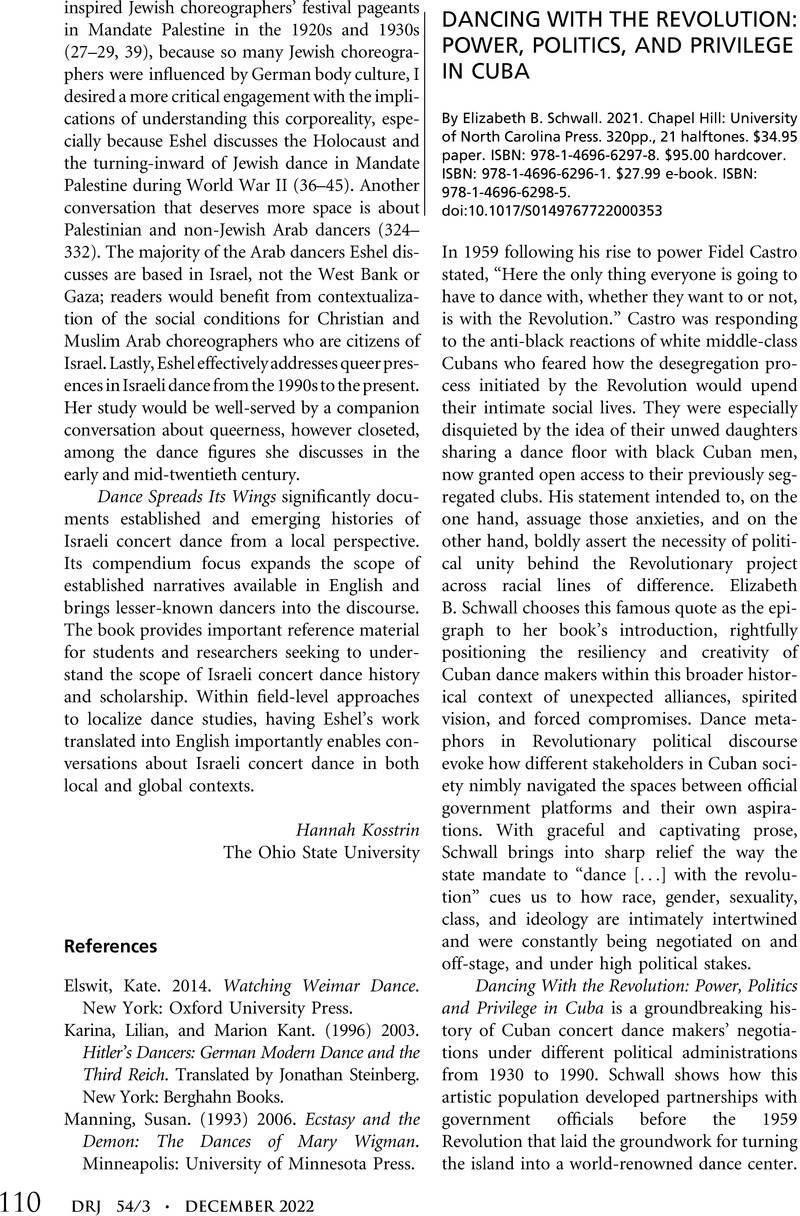No CrossRef data available.
Article contents
DANCING WITH THE REVOLUTION: POWER, POLITICS, AND PRIVILEGE IN CUBA By Elizabeth B. Schwall. 2021. Chapel Hill: University of North Carolina Press. 320pp., 21 halftones. $34.95 paper. ISBN: 978-1-4696-6297-8. $95.00 hardcover. ISBN: 978-1-4696-6296-1. $27.99 e-book. ISBN: 978-1-4696-6298-5.
Review products
DANCING WITH THE REVOLUTION: POWER, POLITICS, AND PRIVILEGE IN CUBA By Elizabeth B. Schwall. 2021. Chapel Hill: University of North Carolina Press. 320pp., 21 halftones. $34.95 paper. ISBN: 978-1-4696-6297-8. $95.00 hardcover. ISBN: 978-1-4696-6296-1. $27.99 e-book. ISBN: 978-1-4696-6298-5.
Published online by Cambridge University Press: 24 March 2023
Abstract
An abstract is not available for this content so a preview has been provided. Please use the Get access link above for information on how to access this content.

- Type
- Book Review
- Information
- Copyright
- Copyright © The Author(s), 2023. Published by Cambridge University Press on behalf of the Dance Studies Association
References
Works Cited
Daniel, Yvonne. 1995. Rumba: Dance and Social Change in Contemporary Cuba. Indianapolis: Indiana University Folklore Institute.Google Scholar
Tomé, Lester. 2017. “Swans in Sugarcane fields: Proletarian Ballet Dancers and The Cuban Revolution's Industrious New Man.” Dance Research Journal, 49 (2):3-25.CrossRefGoogle Scholar


